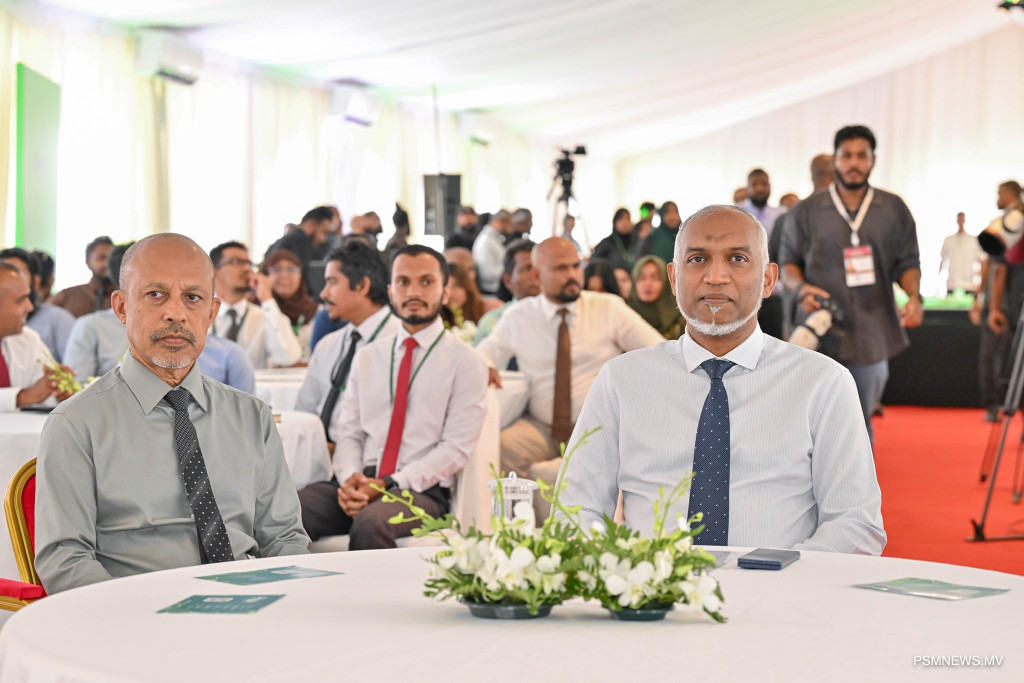
President Dr Mohamed Muizzu on Sunday unveiled a revised master plan for Hulhumalé, a sweeping urban development initiative that government officials have described as "revolutionary" in its scope. Designed to support a growing population while advancing economic expansion, the framework signals the government's commitment to positioning Hulhumalé as a financial hub.
The announcement came at a ceremony in Hulhumalé Phase II, where President Muizzu officially unveiled the master plan before an audience of senior government figures. Among those in attendance were Minister of Cities, Local Government and Public Works Adam Shareef Umar, Minister of Construction, Housing and Infrastructure Dr Abdulla Muththalib, and executives from the Housing Development Corporation (HDC).
According to the HDC, the revised master plan responds to evolving urban demands by strengthening infrastructure and expanding economic opportunities. It incorporates newly reclaimed land in the lagoon, developed following extensive professional consultation to maximise land utilisation and align with contemporary urban planning standards.

Hulhumalé, the country's first city conceived under a master plan, has undergone considerable transformation since Phase I reclamation efforts began, with settlement starting in 2004. Over the past two decades, the urban landscape has shifted dramatically, with Phase II now under development and land reclamation progressing for Phase III. Phase I spans 194 hectares and was originally designed for a population of 100,000, while Phase II encompasses 251 hectares, projected to accommodate 250,000 residents.
Among the most significant revisions is the expansion of the port area, which will grow from 36 hectares to 53 hectares. The updated framework also designates plots for key services, including schools, mosques, and office space, distributed across residential neighbourhoods. The land allocation plan reserves 29.84 percent for residential use, with schools, mosques, and institutions occupying 10.41% percent. Commercial zones account for 5.56 percent, while mixed residential-commercial areas are set at 1.44 percent. Green spaces, sports facilities, and recreational areas represent the largest portion at 30.62 percent, followed by office spaces at 3.64 percent, and industrial activity at 5.76 percent.
Additional urban enhancements include 11 new connections linking Hulhumalé Phases II and III, designed to improve transit between the two areas. Land has also been earmarked for the 'Binveriya' housing project, reflecting the government's broader efforts to accommodate residents through structured development. The revised master plan introduces financial, tourism, cultural, recreational, and event spaces, reinforcing efforts to establish Hulhumalé as a diversified economic centre. A key feature is the integration of infrastructure to support the Maldives' first international financial institution, signalling the government's ambitions to strengthen the city's role in global commerce.

HDC underscored that sustainability remains central to the master plan, ensuring long-term urban resilience while improving residents' quality of life. President Muizzu highlighted the city's evolving role as a financial capital, underscoring the significance of these developments in shaping the nation's economic trajectory.
At the inauguration ceremony, officials presented a detailed 3D model showcasing the planned urban landscape. Minister Adam Shareef also launched HDC's new website, enhancing digital accessibility for urban development initiatives.
